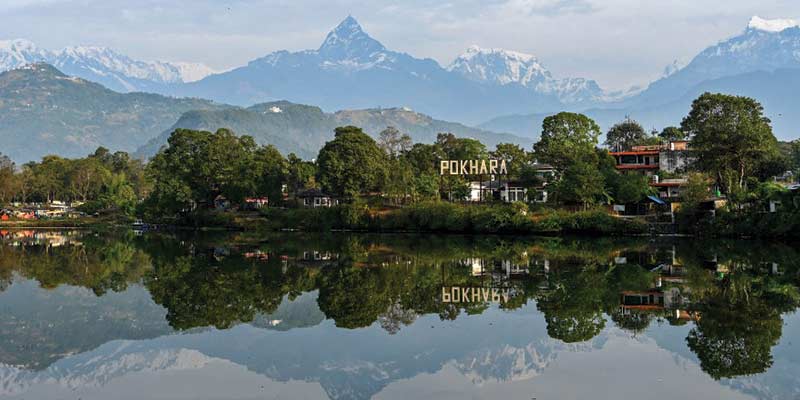- World
- Mar 19
Pokhara declared Nepal’s ‘tourism capital’
• The Nepal government has declared Pokhara, a picturesque city in the Gandaki province, as the ‘tourism capital’ of the Himalayan nation.
• The formal declaration was made during a special ceremony organised at the Barahi Ghat, located on the shores of picturesque Phewa Lake.
• Despite being recognised as a tourism hub for quite some time now, Pokhara was designated as the tourism capital only after fulfilling all essential criteria.
• Declaring Pokhara as the tourism capital will help establish it as a recognisable brand on the international stage.
• It was also announced that business activities including discos, nightclubs, and live music venues in Pokhara will remain open all night.
Pokhara
• Pokhara is one of the most beautiful cities of Nepal and it is an attractive destination for tourists.
• Pokhara is 200 km away from Kathmandu. Its altitude is 827m above the sea level.
• The Pokhara Valley is located in the lap of Annapurna range with three out of the ten highest mountains in the world (Dhaulagiri, Annapurna-I and Manaslu) being within about 15 km linear distance from the valley
• Pokhara owes much of its popularity to the Cluster of Nine Lakes which include the popular Phewa, Begnas, Rupa, Khaste, Dipang, Maidi, Gunde, Neurani, Kamalpokhari and Pokhara Seti Catchment.
• The Pokhara Valley Lake Cluster is listed as a Ramsar Site.
• Lake Cluster comprises nine lakes of noted beauty along the Pokhara Valley in the mid-hill region of Nepal. Each lake supports significant biodiversity, provides important ecosystem services and sustains local livelihoods.
• The Site hosts a wide variety of globally threatened migratory birds such as the critically endangered Baer’s pochard (Aythya baeri) and Indian vulture (Gyps indicus), and mammals such as the vulnerable clouded leopard (Neofelis nebulosa) and the endangered Indian pangolin (Manis crassicaudata).
• Pokhara is among the areas with the highest rainfall in Nepal, and the Valley and the lakes play an important role in the hydrological cycle of the region by recharging groundwater, controlling floods and trapping sediment.
• Thousands of people depend on the lakes for income from tourism, fishing, irrigation, electricity generation and water supply.
Manorama Yearbook app is now available on Google Play Store and iOS App Store

